#Mythological Mesopotamian Metal
Explore tagged Tumblr posts
Text
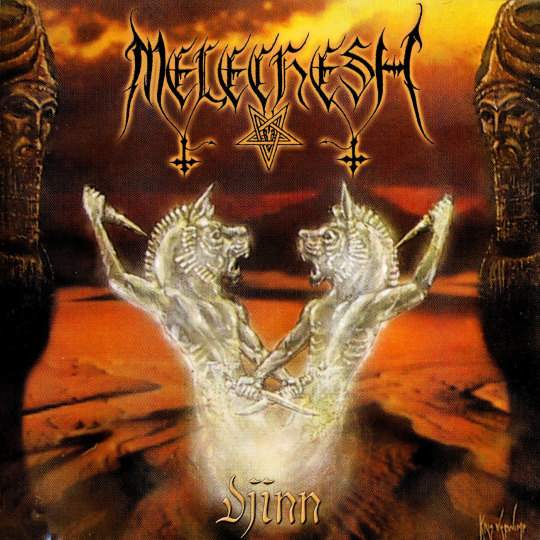
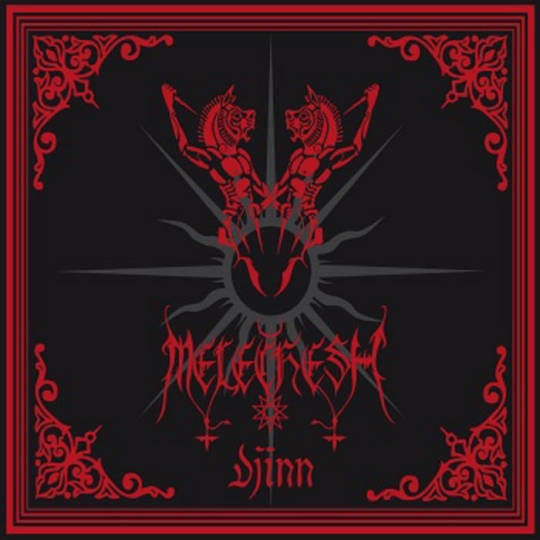
MELECHESH "Djinn" LP 2000
1. Whispers from the Tower 2. Genies, Sorcerers and Mesopotamian Nights 3. A Summoning of Ifrit and Genii 4. Wardjinn 5. Rub the Lantern 6. Covering the Sun 7. Kurnugi's Reign 8. Oasis of Molten Gold 9. Dragon's Legacy 10. The Siege of Lachish
"...The Order Of Mesopotamia will rise The post wisdom treasure will finally be earned Secrets unveiled in the most abstract ways Genies, Sorcerers and Mesopotamian tales..."
Djinn | Melechesh | Osmose Productions (bandcamp.com)
#Melechesh#Mesopotamian Mythological Metal#Ashmedi#Moloch#Al' Hazred#Proscriptor McGovern#Osmose Productions#Kris Verwimp
1 note
·
View note
Text
The Devil(s) of Metal Fight Beyblde.
Dr. Ziggurat, the main antagonist of Beyblade Metal Masters, shares many parallels and similarities with the Christian Devil.
He is a ruthless and manipulative executive of an enterprise called Hades Inc., who enjoys making "deals" with other people. Note that Hades and Hell were interchangeably used in Greek mythology to describe the afterlife. The deals he makes are almost like demonic contracts: Zeo had to become a lab rat to save Toby, losing his sanity in the process. Ziggurat takes advantage of desperate people like Zeo and even Julian.
Ziggurat transformed Toby into Faust, whose name comes from the main character of a German legend. Faust, inspired by Johann Georg Faust, made a contract with the devil: Mephistopheles would serve him, and after a certain number of years, the devil would take his soul. Faust sacrificed his soul either to gain knowledge or for material and personal gain, depending on the version. Toby accepted the arrangement against his will, and even if he was cured, he lost himself in the process. He can play Beyblade again, but as Faust, he is only a soulless tool.
The doctor himself seems to have "sold his soul," since he doesn't care about ethics or the fact that he is using children for his experiments. Hikaru explicitly said that some of the bladers incompatible with the arrangement system were so impacted by it that they had to end their careers.
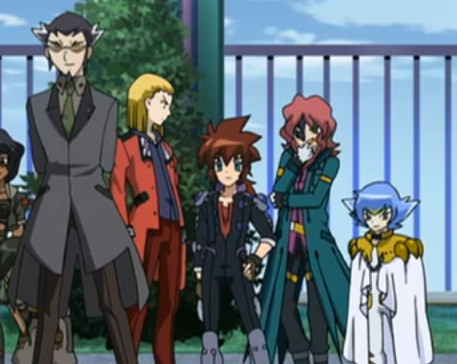
Physically, Ziggurat appears taller than most of the cast, though this is because they are all children. He has spikes of hair at the back of his head, like Damian, that emulate horns. He also wears a dark gray suit, which contrasts sharply with all the colorful characters (even his collaborators, Daidoji and Pluto, seem more colorful than him). He is as gray and dark as the hellish world Damian creates with his Kerbecs.

His name comes from ancient structures called ziggurats, built by the Mesopotamians for cult practices. Daidoji's name means (literally) "great road/way to the temple". They were both part of the Hades cult, lead by Pluto who lived in a temple. However, Ziggurat can also be a reference to the German word "Ziege," which means goat. Ziggurat's design also emulates the animal, with his goatee and spiky hair. His Beyblade is Spiral Capricorn, and in the anime, its Bey beast is often depicted as a simple goat.
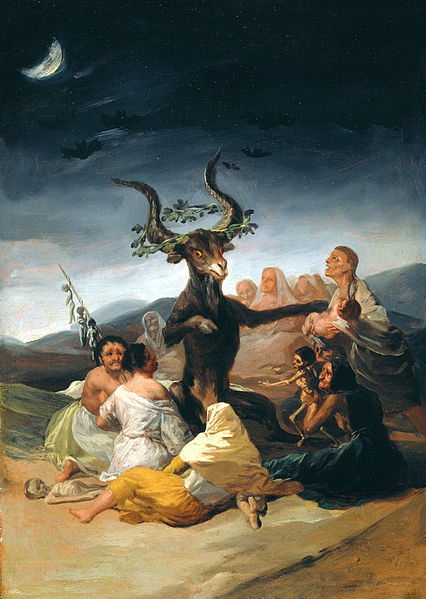
This animal is often tied to the Devil and is one of the forms it takes. The painter Goya depicted a gathering of witches with "Witches' Sabbath" (Goya, 1798), where the Devil takes the form of a goat and is offered children to eat. While the doctor doesn't (seem to) eat children, he effectively despises them and shows a lot of disdain towards them. He also steals their innocence in a way. Zeo and Toby do not take back their Aries Bey; they now use Beys with the Spiral fusion wheel, reminiscent of Spiral Capricorn. Aries is a sheep and is typically associated with innocence. They cannot go back to who they were; they are permanently scarred by what they have been through during their time in Haves Inc.


In the scene where Zeo is stopping Ziggurat, he is at the bottom of the stairs, symbolizing a shift in power dynamics between them. This positioning could also symbolize Zeo casting Ziggurat back to Hell, as Hell is below the Earth in popular culture.
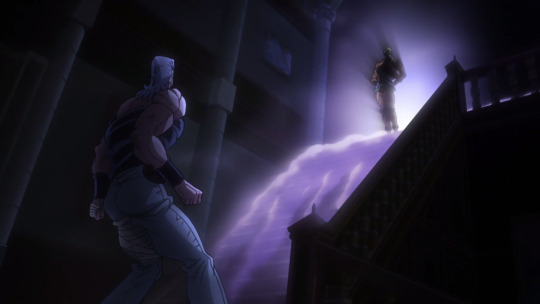

"JoJo's Bizarre Adventure" has previously utilized its antagonists, DIO (assimilated to God) and Diavolo (a mafia boss, assimilated to the devil), in a similar manner. DIO is upstairs (heaven), while Diavolo is at the bottom of the stairs (hell). I would add that in the Metal Saga, it is common for villains to fall: Nemesis and Daidoji fell into a pit, and Hades City fell into the abyss of the sea.



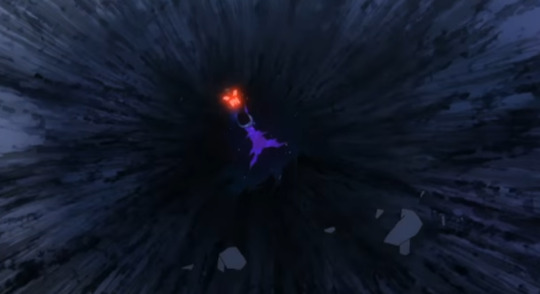
These falls can be interpreted as both a physical defeat and a symbolic triumph over an evil that is cast back into hell.
Ziggurat is a more traditional version of the devil who makes deals with people and manipulates them, while Nemesis embodies the devil of the apocalypse, wishing for total chaos.
#mfb#metal fight beyblade#metal fury#zeo abyss#character analysis#julian konzern#toby beyblade#daidoji#doji beyblade#pluto beyblade#nemesis beyblade#jojo no kimyou na bouken#jjba diavolo#dio jjba#damian hart#dr ziggurat#ziggurat beyblade
33 notes
·
View notes
Text
The Myth of the Annunaki

In the great annals of human history, ha, anal, mostly made up of fiction, few subjects stir the imagination and ad to the aluminum foil shortage as profoundly as the Annunaki. Shrouded in myth and enigma, these ancient deities from Mesopotamian lore have sparked debates, inspired theories, created fiction, and captivated minds across the centuries. From their origins in the fertile crescent of ancient Sumer to their role in modern speculative fiction, the Annunaki embody a rich tapestry of myth, history, and imagination. This exploration delves into their ancient roots, their controversial modern reinterpretations, the fascination evoked by our imagination, and our ability to want things to be real so bad, that we’ll just take as many liberties as possible; even if all the evidence and logic say a thing like this couldn’t be real. Or could it?
The Ancient Mesopotamian Origins of the Annunaki
Our journey begins in the cradle of civilization: ancient Mesopotamia, a region that flourished between the Tigris and Euphrates rivers. Here, the Annunaki first appeared in the mythologies of the Sumerians, who are considered the earliest civilization that could write. The term "Annunaki" itself is often translated as “those who came from the heavens” or “those of royal blood.” This intriguing terminology hints at their elevated status and their perceived connection to the divine or extraterrestrial. In Sumerian mythology, the Annunaki were a pantheon of deities, or the gods of a people, who played crucial roles in the creation of our world and the regulation of its life. They were seen as powerful and unpredictable beings, with the ability to both bestow blessings and wreak havoc upon humanity. The mythological texts from this period reveal that the Annunaki were not abstract concepts but tangible entities with distinct personalities and roles. One of the key sources for understanding the Annunaki is the “Enuma Elish,” the Sumerian creation epic. This ancient narrative describes the primordial chaos from which the world emerged. This myth reflects the Sumerians' worldview, where divine power maintained the balance between chaos and order. The Annunaki's role in Sumerian society extended beyond mere mythology. They were believed to oversee the natural world and human affairs, acting as intermediaries between the gods and the people. Their stories served to justify the divine authority of kings and priests, reinforcing the idea that the rulers were chosen by the gods to maintain cosmic balance from the chaos. This divine connection legitimized the socio-political structures of ancient Mesopotamian civilization.
The Annunaki Reimagined: From Gods to Aliens
In the 20th century, the Annunaki transitioned from divine beings of ancient myth to subjects of modern speculation and conspiracy theories. This transformation was spearheaded by figures like Zecharia Sitchin, whose works have left a permanent mark on how we perceive these ancient myths. Sitchin’s ideas are detailed in his book “The 12th Planet,” where he presents the Annunaki as extraterrestrial visitors from a distant planet named Nibiru. Sitchin’s hypothesis posits that the Annunaki arrived on Earth approximately 450,000 years ago (447,976 BCE). According to his theories, their primary mission was to mine gold, which they needed to repair the failing atmosphere of their home planet, Nibiru. There is some scientific data out there that gold particles can help build up a planet’s atmosphere. There are some intriguing parallels in scientific discussions about the potential uses of gold in atmospheric engineering. Gold is a highly reflective metal with excellent conductive properties, making it suitable for various technological applications. Some we know of and use while others are still in the planning stages. Research has suggested that dispersing gold nanoparticles in the upper atmosphere could theoretically increase a planet's reflectivity, or albedo, thereby reducing the amount of solar energy absorbed and mitigating global warming. Additionally, gold's conductive properties might enhance the electrical conductivity of the ionosphere, potentially stabilizing atmospheric conditions and protecting against solar radiation. While Sitchin's narrative lacks actual real concrete proof, the concept of using gold to address planetary environmental challenges taps into ongoing scientific exploration of innovative geoengineering solutions. Sitchin’s interpretation of ancient texts suggests that the Annunaki’s arrival marked the beginning of human civilization. He argues that these beings not only influenced early human societies but also engineered Homo sapiens through genetic manipulation. This theory, while compelling to many, is highly contentious. Sitchin’s methods and interpretations have faced substantial criticism from the academic community. It's important to note that Zecharia Sitchin lacked formal training in ancient languages and archaeology. His educational background was in economics and journalism, not in the fields relevant to his claims about Sumerian texts and ancient history. This lack of formal expertise has led many academics to criticize his translations and interpretations as speculative and unsubstantiated. His methodology and conclusions have been scrutinized for deviating from established scholarly standards, which is why his work is often labeled as pseudoscience. Pseudoscience literally means science with made-up methodologies and made-up facts. Archaeologists and historians argue that there is no credible evidence supporting the existence of Nibiru or the extraterrestrial origins of the Annunaki. His translations of Sumerian texts are flawed and his theories often stretch the evidence beyond credible limits. Despite this, Sitchin’s ideas have captivated a broad audience, fostering a popular narrative that blends ancient mythology with science fiction. His theories have become a cornerstone of the ancient astronaut hypothesis, which suggests that extraterrestrial beings visited Earth in ancient times and influenced human development. This concept resonates with our fascination with the possibility of life beyond Earth and our desire to explore the unknown or at the very least have an answer where one cannot possibly exist or be factual.
Sitchin’s Controversial Claims: Ancient Astronauts or Misinterpreted Texts?
Sitchin’s theories, particularly those presented in “The 12th Planet,” offer a provocative reimagining of the Annunaki. Sitchin suggests that Nibiru, the Annunaki’s home planet, follows a long, elliptical orbit that brings it close to Earth every 3,600 years. This periodic return, according to Sitchin, allowed the Annunaki to visit Earth and influence human civilization. Sitchin’s narrative begins with the Annunaki’s arrival on Earth, where they established the city of Eridu as their base of operations. Eridu, according to Sitchin, was the first city ever built by these ancient astronauts, serving as a center for their gold mining operations. Over time, the work on Earth became increasingly burdensome and dangerous for the Anunnaki, leading to a significant labor shortage. The Anunnaki’s own workers, who were initially tasked with these duties, were becoming overworked and dissatisfied. We will talk about the Igigi a little bit later. The idea was to create a new species that could handle the manual labor on Earth while the Anunnaki themselves could focus on more critical tasks or return to Nibiru. This led to the concept of bioengineering a creature that would serve as a workforce. The Anunnaki began experimenting with the DNA of the indigenous hominid species, Homo erectus. Through advanced genetic techniques, they combined their own DNA with that of Homo erectus to create a new hybrid species. This genetic manipulation was intended to produce beings with intelligence and physical capabilities suitable for labor. The first attempts at creating this new species were, according to Sitchin, less successful than anticipated. These early hybrids were described as "hideous creatures," struggling to meet the Anunnaki’s requirements for both labor and functionality. These early beings were likely flawed, either in their physical form or in their ability to perform the tasks required of them. Undeterred by their initial failures, the Anunnaki refined their genetic experiments. After several iterations and adjustments, they succeeded in creating a more viable and efficient version of their hybrid creation: Homo sapiens, the modern human. These beings possessed the intelligence, strength, and adaptability necessary for the laborious tasks demanded by the Anunnaki. Once successful, the Anunnaki established Homo sapiens as their labor force, overseeing them and guiding their development. This new species was tasked with performing the menial and physically demanding work that the Anunnaki had initially sought to avoid.
While there are some intriguing gaps and mysteries in human evolution, like missing fossils and sudden advancements in early cultures, scientists believe these are just natural parts of a long, gradual process rather than evidence of any external intervention. One fascinating example is the emergence of our 23rd chromosome, which resulted from the fusion of two ancestral chromosomes that our primate relatives still have as separate chromosomes. This fusion is visible in our DNA through the presence of telomere sequences and a vestigial centromere in the middle of chromosome 2, showing a natural evolutionary change rather than a direct “kick-start” from another species. However, it does bring up more questions than it does answers that all of a sudden this change occurred with no rhyme or reason. “Any sufficiently advanced technology is indistinguishable from magic” - Arthur C. Clarke. Sitchin’s theories also include a dramatic account of the great flood from the bible, which he attributes to the gravitational effects of Nibiru’s orbit. This flood, he argues, was foreseen by the Annunaki, who warned a human named Ziusudra (or Utnapishtim in the Epic of Gilgamesh and/or Noah from the Great Flood of the Bible.) to build a boat to survive the deluge. After the flood, Sitchin posits that the Annunaki played a role in the rebirth of human civilization, teaching essential skills such as agriculture and animal husbandry; which is just a fancy term for focusing on the breeding and care of animals raised for farming and construction. While these ideas are intriguing, they have been met with skepticism from mainstream scholars. Critics argue that Sitchin’s theories lack rigorous academic support. Despite this, Sitchin’s work has had a significant cultural impact, inspiring a new wave of interest in ancient astronaut theories and alternative history. It also has become a business, which opens up its own can of worms on the subject.
The Modern Legacy of the Annunaki: From Books to Podcasts
The Annunaki mythos continues to capture the imagination of contemporary audiences through a variety of media. One prominent figure in this modern exploration is Billy Carson, whose work delves into ancient civilizations and the Annunaki’s role in shaping human history. Carson’s insights, particularly as discussed on “The Joe Rogan Experience (#2160),” explore how ancient myths might reflect actual historical events involving advanced beings. Carson argues that the Annunaki myths could be more than mere stories, suggesting that they might represent a blend of historical events and spiritual beliefs. His theories offer a contemporary perspective on the Annunaki narrative, examining how ancient myths might encode real encounters with extraterrestrial visitors. Carson’s discussions with Joe Rogan explore the idea that ancient texts from Sumerian culture, and other ancient civilizations, might document actual interactions with advanced beings. This perspective aligns with the broader ancient astronaut hypothesis, which suggests that myths of gods descending from the heavens could reflect historical contact with extraterrestrial civilizations. Billy Carson's theories are derived from Zecharia Sitchin's work. So take it with a grain of salt.
The Igigi in Annunaki Lore
The Igigi, as envisioned in contemporary speculative fiction, are often compared to the Greys of UFO lore—those mysterious, otherworldly beings who have captivated the imaginations of some and terrified others. Here, we encounter a striking physical resemblance that underscores their role within the Annunaki’s grand design. A concurred race from an early Annunaki invasion, these tall, slender beings, their forms reminiscent of the Greys with their short stature and large, almond-shaped eyes. Their skin, a subtle gray hue, reflects an alien quality, hinting at a nature that is both familiar and profoundly otherworldly. Their appearance serves as a visual manifestation of their role as intermediaries between the Annunaki and the cosmos. Dressed in functional, utilitarian garments, the Igigi’s attire speaks to their subservient status. These simple, perhaps even austere outfits might be adorned with symbols or insignia, marking their place within the Annunaki’s hierarchical system. Their clothing, devoid of adornment, reinforces their role as laborers rather than equals. The Annunaki and the Igigi are often mentioned as being one in the same but are actually two distinct separate alien species. At least as far as the lore goes.
• Tools of the Trade: Often depicted wielding advanced, enigmatic technology, the Igigi’s tools and equipment hint at a civilization far more advanced than that of humans. These artifacts, sleek and enigmatic, serve as symbols of the Annunaki’s technological prowess and the Igigi’s role in maintaining their dominion over Earth. Some say the tools leftover after the Annunaki left helped build the first, really large pyramids. The more present-day we get with the pyramids the less technologically advanced they are. Where the farther back we go, the bigger and more extravagant the pyramids become. The Igigi are often envisioned as the Annunaki’s labor force, tasked with monumental projects from the construction of grand temples to the maintenance of celestial machinery. This portrayal aligns with ancient mythological themes of divine beings employing subservient races to fulfill their plans.
• Subordinate Yet Significant: Within this narrative, the Igigi occupy a space that is subordinate yet distinctly advanced. They are positioned as beings with greater skills or knowledge than humans, suggesting a complex, multitiered structure of existence in which they play a crucial role in the Annunaki’s rein.
• Cultural Reflections: The Igigi physical form, their role in the Annunaki hierarchy, and their place in modern speculative fiction all serve as lenses through which we can explore deeper existential questions. The Igigi invites us to reflect on the nature of servitude, the structure of divine power, and our own place in the grand scheme of existence. We find ourselves drawn into cosmic feelings and thoughts that challenge and inspire us. It also scares us to our core foundation that we may just be an insignificant race of worker ants.
The Enuma Elish and Its Cosmic Significance
The Enuma Elish is an ancient Mesopotamian/Sumerian creation epic that dates back to the late second millennium BCE, (2000 BCE to 1001 BCE.) This epic is more than a religious text; it is a reflection of the Sumerians' understanding of the universe and their place within it. In the Enuma Elish, the universe begins in a state of primordial chaos, where Tiamat, the goddess of the saltwater ocean, battles the god Marduk, who represents the forces of order and creation. Marduk’s victory signifies the establishment of the cosmos, with the world being created from Tiamat’s body. This mythological narrative embodies the Sumerians' view of the divine as a force that imposes order upon chaos, a theme that echoes throughout Mesopotamian religion and governance. The epic also illustrates the Sumerians' concept of divine kingship. Marduk’s ascension to supremacy among the gods symbolizes the divine right of kings to rule over the human realm. The Annunaki’s role as divine judges and rulers reflects this belief, showing how mythology was intertwined with political and social structures in Sumerian society.
The Great Flood: Myth and Reality
One of the most enduring aspects of the Annunaki narrative is the story of the Great Flood, which appears in various ancient myths, including the Epic of Gilgamesh. According to Sitchin, this flood was a cataclysmic event caused by Nibiru’s orbit and was a pivotal moment in human history. The flood story serves as a metaphor for both destruction and renewal. It represents the cyclical nature of existence, where the end of one era leads to the beginning of another. This mythological theme is reflected in other ancient cultures, such as the biblical flood narrative of Noah’s Ark, highlighting a shared human fascination with the idea of divine intervention in shaping history. This also gives insight that other branches of humanity survived the Great Flood. Not many pockets, but some did. There was not much left. Pockets of survivors here/there. The Annunaki began to help humanity rebuild, but in a limited way. Showing humans some science but leaving much of it in the dark. We turn the light switch on, but don’t know why it works. Just that it works and we have some idea how to fix the switch when it breaks, but we cannot literally build a new one as they did. Just our badly back-engineered knowledge of the thing. This seems even more prevalent today.
The Fascination with the Annunaki
We question our understanding of the past and explore the possibilities of what lies beyond our world, our understanding. The Annunaki’s legacy is not confined to academic study or historical research. They continue to inspire a wide range of creative works, from books and documentaries to podcasts and films. Some intended to be works of fiction while others try to paint the picture as this really did happen in our distant past. This ongoing fascination reflects a deep-seated human desire to connect with the mysteries of existence and to explore the unknown.
Embracing the Enigma - “You Are Bugs…”
The Annunaki’s story, rooted in the myths of ancient Mesopotamia and reimagined through modern theories, offers a rich and multifaceted narrative that invites us to explore the boundaries of our knowledge and imagination. As we delve into the history and speculation surrounding the Annunaki, we confront not only ancient mysteries, but also the limits of our perception and the possibilities of what might lie beyond. Whether viewed as gods, aliens, or metaphorical figures, the Annunaki challenge us to embrace the enigma of our origins and to seek out the answers to the great questions of existence. The Annunaki’s journey from ancient Mesopotamian myths to contemporary theories highlights the enduring allure of these celestial beings. Their story encourages us to explore the unknown and to question the narratives that shape our understanding of the universe. The Annunaki stand as a testament to the power of myth and the endless possibilities of the human imagination.
If beings like the Greys, Anunnaki, and Igigi are real, the implications for mankind could be deeply terrifying and unsettling. The existence of such advanced entities would create a profound power imbalance, leaving humanity vulnerable to their superior technology and intellect, which might challenge our beliefs about our own significance and place in the universe. The fear of being controlled or manipulated by these beings could evoke a sense of existential dread, as we might question the very meaning of our existence, existence in general, and the potential for extinction or enslavement of our species. Historically, the idea that these beings might have shaped our civilizations and beliefs from the shadows would undermine our understanding of our past and cast doubt on our sense of free will and autonomy as the dominant species on this planet. The terror of the unknown—where their intentions are indecipherable and could involve invasive experiments or even global invasions—would stir fears of being watched, violated, or destroyed. This fear would also have a global psychological impact, leading to anxiety, paranoia, and a crisis of identity as we confront the reality that we might be insignificant in the grand cosmic scheme. “You are bugs…” ~Liu Cixin, The Three-Body Problem. Philosophically, the existence of such beings would provoke deep questions about our own morality of our collective behavior in the past 3,000 years, the morality of their actions, and our own role in the universe. Challenging our beliefs about existence and ethics. This realization of the Greys, Anunnaki, and Igigi as real entities would force us to face an unsettling truth about our vulnerability, the reliability of our historical narratives, the very nature of our existence in the cosmos, and that God exists and created us in its own image. Perhaps to just hear our screams. Even God cannot hear bugs scream, in space.
All the information here was derived from the main outline below. If anyone wanted a very short telling of this tale via a basic timescale outline, there is one below.
"I felt an absolutely indescribable sense of menace. It was hell on earth to be there, and yet I couldn't move, couldn't cry out, couldn't get away. I'd lay as still as death, suffering inner agonies." ~Whitley Strieber, “Communion” 2/25/1987
The Myth of the Annunaki by David-Angelo Mineo 7/1/2024 3,336 Words
Outline: Ancient Timeline of Earth
The Annunaki Myth, Religious Myths, and Modern Innovations
Ancient Timeline of Earth and Mankind: The Annunaki
Pre-Earth Events
Primordial Era
The Enuma Elish describes the creation of the world starting with the primordial gods Apsu (freshwater) and Tiamat (salt water). Their mingling leads to the birth of younger gods, including Ea (Enki), who defeats Apsu and later Tiamat, establishing order from chaos.
Arrival of the Annunaki
Circa 450,000 years ago
According to Sitchin’s "The 12th Planet," advanced beings called the Annunaki arrive on Earth from their home planet, Nibiru. Nibiru’s elongated orbit brings it into the inner solar system approximately every 3,600 years.
Establishment of Eridu
Circa 445,000 years ago
The Annunaki establish Eridu, the first city on Earth, in southern Mesopotamia. Enki, the god of wisdom, water, and creation, oversees the development of Eridu as a base for mining operations.
Gold Mining and the Creation of Man
Circa 300,000 years ago
The Annunaki face labor shortages and hardships in their gold mining operations. Enki and the goddess Ninhursag create Homo sapiens by genetically modifying Homo erectus with Annunaki DNA. The first humans, known as "Lulu," are created to serve as workers for the Annunaki.
The Deluge (Great Flood)
Circa 13,000 years ago
The Epic of Gilgamesh and Sitchin’s writings describe a great deluge caused by the gravitational pull of Nibiru passing near Earth. Enki warns Ziusudra (Utnapishtim and/or Noah) to build a large boat to save himself, his family, and various species from the flood.
Post-Flood Reconstruction
Post-Flood Era (circa 10,000 BCE)
The Annunaki help humanity rebuild civilization after the flood. Agriculture, animal husbandry, and advanced knowledge are shared with humans. Key cities such as Ur, Uruk, and Nippur are established and flourish.
Rise of City-States and Kingship
Circa 3,000 BCE
Sumerian city-states rise to prominence, each with a patron god or goddess. Kingship is seen as a divine institution bestowed by the Annunaki. Inanna (Ishtar) becomes a significant deity, known for her power, beauty, and political influence.
The Epic of Gilgamesh
Circa 2,600 BCE
The historical King Gilgamesh of Uruk embarks on a quest for immortality. The epic narrative includes interactions with gods and mythical creatures, reflecting the close relationship between humans and the divine.
Decline of Annunaki Influence
Circa 1,000 BCE and onward
The direct influence of the Annunaki wanes as human civilizations grow more independent. The memory of the Annunaki becomes mythologized in various cultures, giving rise to numerous legends and religious narratives.
Comprehensive Timeline: Annunaki Myth, Christian Bible, and Western Civilization
Ancient Mythological and Religious Accounts
Early Sumerian Civilization (c. 4500-1900 BCE)
The Annunaki are a group of deities linked to the Sumerians, Akkadians, Assyrians, and Babylonians. They are depicted as judges of the underworld and creators of mankind. Primary sources include Sumerian texts such as the Enuma Elish and the Epic of Gilgamesh.
Ancient Mesopotamian Mythology (c. 1900-539 BCE)
The Annunaki myth expands in Babylonian and Assyrian mythology. The Annunaki are positioned below higher gods like Anu, Enlil, and Ea/Enki.
Egyptian Civilization
Old Kingdom of Egypt (c. 2686-2181 BCE)
Egyptian mythology includes gods like Ra, Osiris, and Isis. Creation myths often involve gods emerging from primordial chaos. Construction of pyramids, including the Great Pyramid of Giza.
New Kingdom of Egypt (c. 1550-1070 BCE)
Heightened worship of gods like Amun-Ra. Pharaohs are considered divine or semi-divine. Cultural achievements include the expansion of the empire, construction of temples, and advancements in art and literature.
Greek Civilization
Classical Greece (c. 508-323 BCE)
Greek mythology features gods like Zeus, Hera, and Athena. Creation myths include the Titans and Olympians. Contributions by Socrates, Plato, Aristotle lead to the development of early scientific thought.
Hellenistic Period (c. 323-31 BCE)
Greek culture spreads throughout the Mediterranean and Near East following the conquests of Alexander the Great. Syncretism leads to the blending of Greek and local deities and myths.
Roman Civilization
Roman Republic (c. 509-27 BCE)
Roman gods parallel Greek deities, e.g., Jupiter (Zeus), Venus (Aphrodite). Political developments include the establishment of the Republic and the codification of Roman law.
Roman Empire (27 BCE-476 CE)
Emergence and spread of Christianity, including the crucifixion of Jesus Christ (c. 30 CE). Cultural achievements include extensive road networks, architectural marvels like the Colosseum, and legal advancements.
Development of Europe
Early Middle Ages (c. 476-1000 CE)
Christianity becomes dominant in Europe. Monasticism and the establishment of the papacy. Development of feudalism and manorialism.
High and Late Middle Ages (c. 1000-1500 CE)
The Crusades: Religious wars aimed at reclaiming the Holy Land. Cultural revival includes Gothic architecture, universities, and scholasticism.
Renaissance (c. 1300-1600 CE)
Rebirth of classical knowledge: Revival of Greek and Roman knowledge. Advancements in art, science, and exploration. Humanism focuses on human potential and achievements.
Formation of Modern Western Culture
Reformation and Enlightenment (c. 1500-1800 CE)
Martin Luther’s 95 Theses (1517) sparks the Protestant Reformation. Scientific developments by Copernicus, Galileo, and Newton. The Enlightenment emphasizes reason, individualism, and skepticism of authority.
Formation of England and Modern Europe (c. 800-1800 CE)
Formation of early English kingdoms. The Norman Conquest (1066) establishes Norman rule. The development of modern nation-states in Europe.
Industrial Revolution and Modern Era (c. 1800-Present)
Technological advancements, urbanization, and economic changes. Influence of Western culture globally, driven by economic, technological, and cultural factors. Continued advancements in science and technology. Widespread debunking of pseudo-scientific theories like Sitchin’s Annunaki hypothesis.
Integration of Annunaki Myth and Christian Bible
Modern Interpretations and Pseudo-scientific Theories (1976 onwards)
Zecharia Sitchin proposes that the Annunaki are extraterrestrial beings from the planet Nibiru, influencing early human history. Sitchin’s theories are widely discredited by scholars and scientists.
Cultural Impact and Ongoing Beliefs (2000s-Present)
Annunaki and Nibiru myths influence books, movies, and online discussions. Christian themes remain prevalent in Western culture, influencing literature, art, and media. Despite scientific debunking, belief in Sitchin’s theories persists in some communities.
#annunaki#sumerianmythology#mesopotamia#ancientaliens#zechariasitchin#the12thplanet#nibiru#ancientastronauts#enumaelish#sumeriancreationmyth#mythology#extraterrestriallife#historicalconspiracy#mythandreality#ancienthistory#archaeology#ancientcivilizations#ancienttexts#sciencefiction#modernmyths#historicalmysteries#ancientlegends#speculativehistory#biblicalflood#greatflood#ziusudra#humanorigins#geneticengineering#alienintervention#igigi
13 notes
·
View notes
Text
hey so fun fact this guy?

yeah he might actually be a mainline-ified demikids demon
not joking

glasya labolas only appeared in demikids light and dark versions as a boss and is, from what i can tell, unable to be fused. the recent demon showcase seems to display fusion as a possibility which if so yippee! here’s to another fucked up dog.
but what’s especially striking is in terms of design
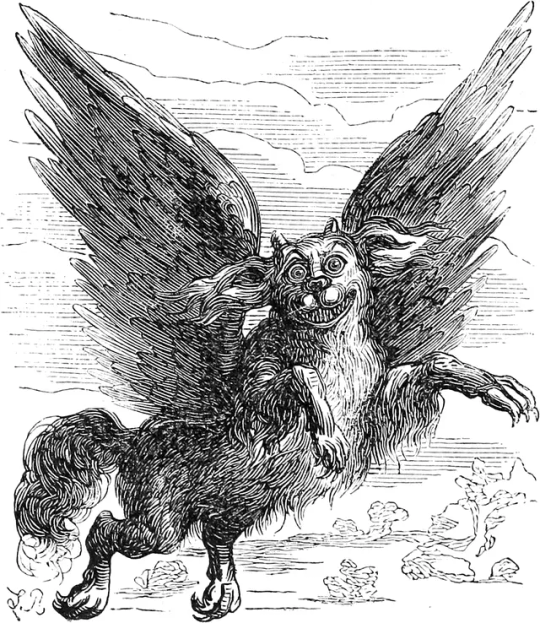
i’d say 5v’s relatively more accurate than demikids but definitely isn’t 100% based on mythological depictions. glasya is a gryphon with the head of a dog (and apparently baby goat horns as shown in this illustration in the infernal dictionary). this seems to be the depiction 5v drew from because of the uh very suspicious smile but i appreciate the overall change in tone.
a lot of the more metallic(?) designs actually take a ton from ancient mesopotamian art and jewelry—fitting as the creature is of goetic origin. overall super interesting but the design might not jive with others. definitely a standout when it comes to the designs of other goetic demons depicted within megaten :)
#i really like this guy if you couldn’t tell#love all the inspiration taken#shantien rambles#smt#smt 5#shin megami tensei v vengeance#megaten
13 notes
·
View notes
Note
Your ghouls feel like Endless to me and I mean that as a compliment
I have really liked the Endless for ages, so thank you. Although my favorite character in that series is The Corinthian, if that says anything about me.
I liked how their reality was created by their minds and so it had this weird stream of consciousness quality. I'm a bit disappointed in the Netflix series that they didn't feature that whimsical aspect enough.
My ghoul HC more closely align with Djinn than with demons. Djinn in legends are corporeal but unseen beings that live parallel lives to humans. They are born neutral which means they can be faithful/convert to Islam, neutral or faithful to something else. They are capable of good deeds and sin as much as a human, although they have supernatural powers. The wikipedia page is a pretty interesting dive into ancient mythology and etymology. (And of course the rabbit hole goes much much deeper.) Many regions of the world have this "other society" being in their folklore.
Djinn and the European Fae also dislike metal, and (please don't quote me on this) one way to trap them and make them be your servant is to slip an iron pin on their clothing. They can't touch it themselves and so will do whatever you want them to do to get you to remove it.
Also the Mesopotamian and later Greek/Roman beings called Geniuses. They are not of the gods but interact with humans and were thought to directly inspire people with creative thought. Djinn/Genius some scholars believe share a root word from an ancestral language, but that's not proven. Just interesting.
I've been interested in mythology since I was little and so I put a lot of it into my work.



Copy of a genius from a Grecian vase, a Djinn lord, Copy of an Assyrian wall relief depicting a winged genius
9 notes
·
View notes
Text
P6 Idea - 22 Dragon Veins
First let's talk about dragon veins. They are formed from the collective subconscious of extinct creatures on the earth, and they have always supported the balance of this world. After the protagonist completes certain tasks and the dragon veins enter into a contract, the dragon veins will reside in the protagonist's body and allow the protagonist to give birth to a "cosmic egg" that symbolizes motherhood. As the protagonist takes care of the cosmic egg, it will turn into a persona.
The personas hatched from the cosmic egg are a mixture of their own mythological images and Mesozoic reptilians. The arrangement of the 22 Arcana is as follows:
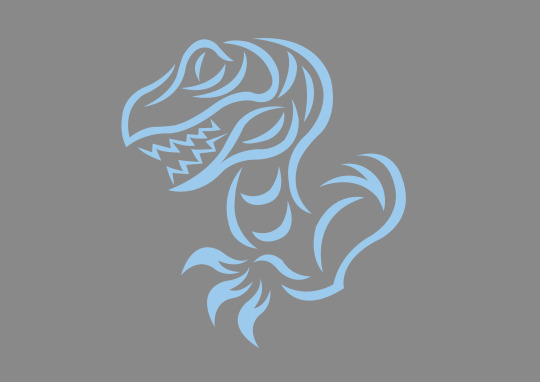
The Fool - Yam, the sea god in Ugaritic mythology - A dromaeosaur covered in ocean-style armor

The Magician - Aitvaras, the fire spirit in Lithuanian folklore - An oviraptor dressed as a wizard with hands on fire

The Priestess - Kuraokami, the water goddess in Japanese mythology - An elegant plesiosaur wrapped in Shinto relics

The Empress - Meretseger, the winged snake goddess in Egyptian mythology - Archaeopteryx in ancient Egyptian style

The Emperor - Yatonokami, the horned snake god in Japanese mythology - A stegosaur decorated with cold weapons from the Jomon period

The Hierophant - Itzamna, the lizard god in Mayan mythology - A sauropod made of Mayan architectural stones

The Lovers - Melusine, the winged human-snake fairy from French folklore - A petite pterosaur with a draconic fairy sculpture on its tail

The Chariot - Tarasque, the monster suppressed by a saint in French legend - An ankylosaur assembled from a round tank and turret

Justice - Mushussu, the hybrids appearing on decorations in ancient Mesopotamia - Shringasaurus decorated with snake, ram, lion, eagle and scorpion armors
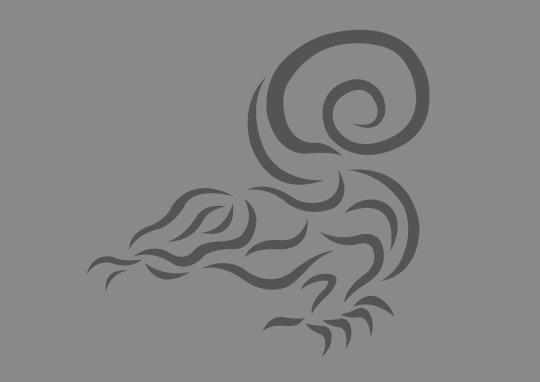
The Hermit - Fafnir, the dwarf who transformed into dragon in Norse mythology - An megalania wearing dragon-shaped armor

Fortune - Illuyanka, the sea serpent in Hittite mythology - Mosasaurus with cyberpunk style

Strength - Vrtra, the powerful monster in Hindu mythology - A tyrannosaur that blends into the truck and keeps smoking

The Hanged Man - Python, the big snake killed by Apollo in Greek mythology - Titanoboa with steampunk elements

Death - Crom Cruach, the heretic god in Celtic mythology - Triceratops with steam train and gothic decoration

Temperance - Nyami Nyami, the snake god of the Zambezi River - A spinosaur with Gaigan elements
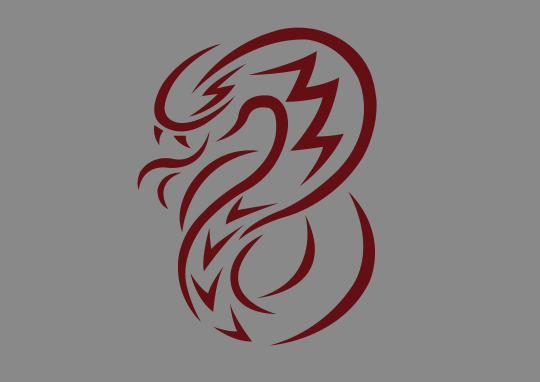
The Devil - Apophis, the evil snake god in Egyptian mythology - A giant cobra made of dark energy
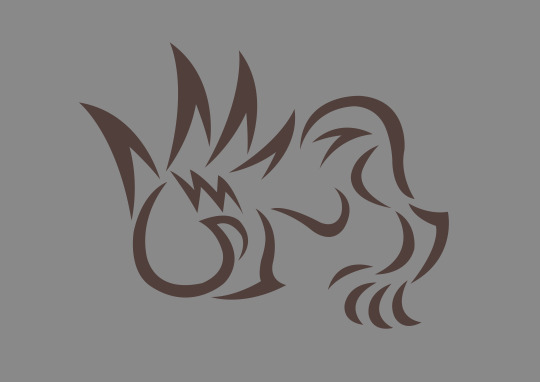
The Tower - Fernyiges, the cunning black dragon in Hungarian folklore - A wise stygimoloch wearing a black cloak
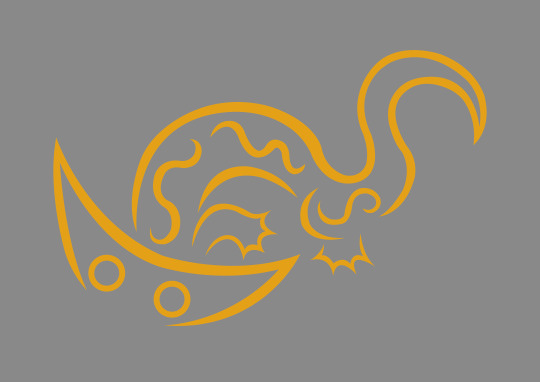
The Star - Yurlungur, the rainbow serpent in Australian Aboriginal mythology - Prehistoric salamander in Aboriginal totem style

The Moon - Bakunawa, the sea dragon that swallowed the moon in Philippine mythology - Ichthyosaur composed of moon-shaped luminous wooden boards

The Sun - Quetzalcoatl, the greatest god in Aztec mythology - A giant pterosaur in the style of a fighter jet and Rodan
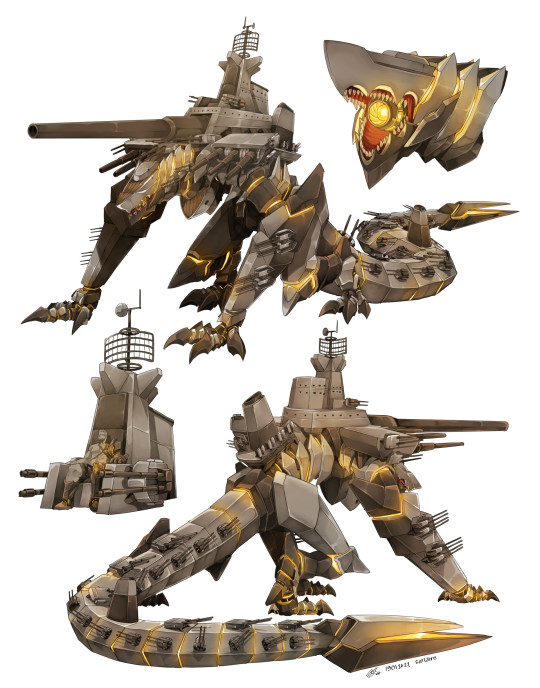
Judgement - Kur, the dragon that symbolizes the underworld in Mesopotamian mythology - Countless dragon veins and sharp metals piled up to form a Daikajiu like Godzilla
As for "The World", I'm keeping it secret for the time being in order not to prevent the plot from leaking out.
6 notes
·
View notes
Text
The Final List of Competitors!
Hawks, My Hero Academia
Revali, Legend of Zelda Breath of the Wild
Big Bird, Sesame Street
The Babylon Rogues, Sonic the Hedgehog
Donald Duck, Disney
Beatrice, Over the Garden Wall
Hooty, The Owl House
Tokoyami and Dark Shadow, My Hero Academia
Flapjack, The Owl House
Tobias, Animorphs
Xiao, Genshin Impact
Tsubasa Otori, Metal Fight Beyblade
Kass, The Legend of Zelda Breath of the Wild
Davesprite, Homestuck
Eda the Owl lady, The Owl House
Hei Hei, Moana
Duck/Ahiru, Princess Tutu
Dick Grayson, DC
Chainsaw, The Raven Cycle
Zazu, The Lion King
Woodstock, Charlie Brown/Peanuts
Bird that Carries you over a Disproportionately Small Gap, Undertale
The Road Runner, Looney Toons
Stephanie Brown, Batman
The Raven, The Raven by Edgar Allan Poe
Matthew the Raven, The Sandman
Launchpad McQuack, Ducktales
Dee Reynolds, It’s Always Sunny in Philadelphia
Germ Warfare, Night in the Woods
Kevin, Up
Crane, Kung Fu Panda
Black Canary, DC
Blathers, Animal Crossing
Hawk and Dove, DC
Damian Wayne, DC
Jason Todd, DC
Raven, Teen Titans
Qrow Branwen, RWBY
Huey Dewey and Louie, Ducktales
Grian, Hermitcraft
Polly the Parrot, Ace Attorney
Pericles, Scooby Doo Mystery Incorporated
Daffy Duck, Looney Toons
Mumble, Happy Feet
Iago, Aladdin
Eren Yeager, Attack on Titan
Cloud Retainer, Genshin Impact
Rowlet, Pokemon
Duck Guy, Don’t Hug me I’m Scared
Piplup, Pokemon
Ho-Oh, Pokemon
Della Duck, Ducktales
Kiri, Critical Role Campaign 2: The Mighty Nein
Philza, Origin SMP
King Dedede, Kirby
Celeste, Animal Crossing
Berdly, Deltarune
Lord Shen, Kung Fu Panda 2
Soren, Guardians of Ga’hoole
Scuttle, The Little Mermaid
Kaeya Alberich, Genshin Impact
Webby Vanderquack, Ducktales
Hetare, Tokyo Ghoul
Katniss Everdeen, The Hunger Games
Icarus, Greek Mythology
Stolas Goetia, Helluva Boss
Flappy Bird, Flappy Bird
Brennan Lee Mulligan, Real Life (Exception)
Zane’s falcon, Lego Ninjago
Howard the Duck, Marvel Howard the Duck
Flit, Pocahontas
Itachi Uchiha, Naruto
Colonel Sanders, KFC
Xavier Ramier/Mr. Pigeon, Miraculous: Tales of Ladybug and Cat Noir
Stardust Cookie, Cookie Run: Kingdom
Duo, Duolingo
Ishtar. Mesopotamian Mythology
The Eagles, Lord of the Rings
Dodo, Alice’s Adventures in Wonderland
Diluc, Genshin Impact
Xatu, Pokemon
Blu, Rio
Washimi, Aggrestuko
Oz (And Fischl), Genshin Impact
The Penguin, Batman
Hoothoot, Pokemon
Coo, Kirby
Dyna Blade, Kirby
Taillow, Pokemon
Staraptor, Pokemon
Farfetch’d, Pokemon
Apollo, Animal Crossing
Torchic, Pokemon
Boyd Drake, Ducktales
Wan Shi Tong, Avatar the Last Airbender
Howl Pendragon, Howl's Moving Castle
Parrot, Minecraft
Sadie Kane, The Kane Chronicles
Mordecai, Regular Show
Chicken Little, Chicken Little
Hawkeye Clint Barton, Marvel
Reaper, Overwatch
Otulissa, Guardians of Ga’Hoole
Poromon, Digimon
Horus, Egyptian Mythology
Callum, The Dragon Prince
Foghorn Leghorn, Looney Toons
Magpie, Inkheart
Billina the Yellow Hen, Oz
Hasshie, ClassicaLoid
Longclaw, Sonic the Hedgehog
Swatch, Deltarune
The Bird, Portal 2
Jose Carioca, The Three Caballeros
Falco, Star Fox
Kaepora Gaebora, The Legend of Zelda
Tuca and Bertie, Tuca and Bertie
Owlowiscious, My Little Pony: Friendship is Magic
Owl, Winnie the Pooh
Crowberry Cookie, Cookie Run: Kingdom
Nightingale, The Nightingale and the Rose
Loftwing, The Legend of Zelda: Skyward Sword
Orville, Animal Crossing
Scrooge McDuck, Ducktales
Piu Piu, Molang
Kaneki Ken, Tokyo Ghoul
Magica De Spell, Ducktales
Cerrit Agrupnin, Critical Role Exandria Unlimited: Calamity
#I had to cut some with 2 votes#combined a few submissions#sorry but im not having like 20 or 40 submissions just pokemon#from now on everything not poll related will be tagged#not a poll#best bird bash
13 notes
·
View notes
Text
Power Types in Fandoms
I was up in the middle of the night arguing with my ceiling about fictional characters, Death Battle style, and decided to make a ❗rudimentary❗ list, from weakest to strongest Power Types. Because it's a gradient, each progressively higher power type can (and often does) contain the abilities of lower types.
⚔🤖💉🤺🤰🧜♂️🔮👽
⚔ Standard Fighters
OP warriors with maxed out skills, but main character plot armor saves them from outrageous situations
Conan the Barbarian, Tuxedo Mask (Sailor Moon), Link (Zelda), Yujiro Hanma (Baki), Buffy the Vampire Slayer, Robin Hood, Odysseus (Greek mythology), Xena Warrior Princess, etc
🤖 Tech/Mech Warriors
Fight with technology; but caught slipping butt naked with ZERO gear (wifi signal, power generator, fancy gadgets/weapons, power suits, etc) and they don't stand a chance without hax/plot armor
Low Level tech (borderline realistic/futuristic gear)
Ratchet & Clank, Doom Guy (Doom), Master Chief (Halo), Batman, Power Rangers, etc
High Level tech (science & magic blur)
Gundam, Xenosaga, Neon Genesis Evangelion, Iron Man, Guts (Berserk), Sailor Moon, Perseus (Greek mythology), etc
💉 Roid Rage
Ate/drank something, or got bit/injected/dunked/exposed to something out in nature or in a lab--scientific, biological, or magical-- that permanently altered their bodies, genes, & abilities. Often "immortal/indestructible," depending on the universe.
Scientific (Lab Accidents/Hijinks/Procedures)
Frankenstein*, The Powerpuff Girls, S.H.I.E.L.D. (Black Widow, Hawkeye, etc), Captain America, The Hulk, The Flash, Harley Quinn (& The Joker, kinda), Dr Manhattan (Watchmen), Dr Robotnik (Sonic), TMNT, etc
Biological (technically Scientific, sure)
Spider Man, Morbius, Poison Ivy, Witchers (Geralt of Rivia), etc
Magical/Supernatural (technically Biological?)
Black Panther, Luffy (One Piece), Aquaman*, Achilles (Greek mythology), Danny Phantom, Werewolves*, Titans (Attack on Titan), Homunculi (Wrath & Greed, Full Metal Alchemist), Sephiroth (Final Fantasy)
🤺 Androids/Cyborgs
Deliberately created part man, part tech/mech. Can be/look more or less "human," or barely at all. (More or less "immortal/indestructible," depending.). "Science" & magic blur.
Androids (Dragonball), Wolverine, Dororo, Sekiro, Robocop, Bionic Woman, The Terminator, Frankenstein*, Homunculus (FMA), The Borg (Star Trek), Darth Vader, etc
🤰Mutations
Born to regular human parents, but with unexpected supernatural abilities and/or appearance. These abilities are random AF and their power can fluctuate wildly depending on the character/universe.
Mutants (X-Men), Killer Croc (Batman), Namor (Black Panther), Aquaman*, etc
🧜♂️ Hybrids
Born to at least one (1) human parent, but with unexpected supernatural abilities and/or appearance. The non-human parent can make their abilities fluctuate wildly, depending on the character/universe.
Animal/Creature Hybrid
Centaurs, Minotaurs, etc (Greek mythology), werewolves*, etc
Magical Race Hybrid (Low Level--dwarves, elves, sorcerers, etc)
Luke Skywalker, etc
Magical Race Hybrid (High Level--undead, spirits, gods/demons, aliens, etc)
- 1/2 vampire Dhampirs: Blade, Alucard (Castlevania, Helsing), etc
- 1/2 demon Cambions, yokai, etc: Abe no Seimei, Merlin, Inuyasha, etc
- 1/2 god Demigods: Hercules (Greek mythology), Gilgamesh (Mesopotamian mythology), Sailor Pluto (Sailor Moon), Kratos & Atreus (God of War), etc
🔮 Magicians
(Human) magic users who can either manipulate the senses, control spirits and/or the elements, bend/break the laws of nature (gravity, matter, shapeshifting, physics, space, time, etc), or all of the above. Includes: magicians, mages/sages, witches, wizards, sorcerers, mediums, psychics, hypnotists, exorcists, ghost hunters, etc. (Depending on the universe, these terms might be used interchangeably, or only for specific types of abilities.)
Manipulate the senses
Hypnotists -- (Naruto (low level ninjas))
Control/commune with spirits/demons (and/or the elements)
Exorcists, mediums, psychics, witches, etc -- (John Constantine, Van Helsing, Talamasca & Mayfairs (Anne Rice), etc)
Control the elements & bend/break the laws of nature
Dovahkin (Skyrim), Benders (TLAB), Alchemists (FMA), etc
All of the Above
Harry Potter (witches/wizards), The Avatar (TLAB), Jedi (Star Wars), Naruto (high level ninjas), Onmyoji (Shintoism), Cultivators (xianxia), etc
👽 Extraterrestrials
Transcendent beings not of this world/planet, terrestrial plane, or dimension. Are not subject to Earthly laws of nature (gravity, matter, shapeshifting, physics, space, time, etc)--e.g.: many alien races are physically much stronger than humans because their planet's gravity is heavier, etc. Depending on the type of world, being, character, or universe, their abilities can fluctuate wildly.
Aliens
The Doctor(s) (Doctor Who)
Vulcans, Romulans, Klingons, oh my~! (Star Trek)
Saiyans (Dragonball)
Kryptonians (Superman, Zod, etc)
Spirits/Undead
Undead: Zombies, Ghosts, Vampires, etc
Fae:* fairies, elves, goblins (Labyrinth), giants, kitsune, etc (depends on the lore)
Angels/Demons
Fae* (depends on the lore/mythos/religion)
Demons/Yokai, etc: Hellboy, Darkness (Legend), Sesshomaru (Inuyasha), etc
Djinn/Genies* (depends on the lore)
Shinigami: (Bleach, Black Butler, Death Note, Yu Yu Hakusho, etc)
Angels: (Constantine, Good Omens, Maiar (LOTR), etc)
Gods
Q (Star Trek), Chthulu (Lovecraft), Majin Buu (Dragonball)
Dragons (depends on the lore/mythos/religion)
Fae* (depends on the lore/mythos/religion)
Sun Wukong (Journey to the West)
Zeus (Greek mythology), Amaterasu & Susa No O & Izanagi & Izanami etc (Japanese mythology), Odin & Thor & Loki (Marvel/Norse mythology), etc
👽🔮🧜♂️🤰🤺💉🤖⚔
Again, this is just a rudimentary list of characters/fandoms off the top of my head; and I'm sleep deprived. I likely forgot a lot of powerups, retcons, AUs, and more--oops.
6 notes
·
View notes
Text
The Enduring Allure of Gold in Fine Jewelry: A Journey Through History
Gold has been a universal symbol of beauty, power, and wealth across cultures and centuries. Its inherent elegance and enduring value have cemented its role in fine jewellery, making it a treasured choice for adornment, celebration, and investment. At 24 Gold Group Ltd., we are inspired by the fascinating journey of gold in fine jewellery, from its ancient origins to its modern-day appeal.
Ancient Civilizations: The First Goldsmiths
The story of Gold in Fine Jewellery begins thousands of years ago, with early civilizations such as the Egyptians and Mesopotamians. Ancient Egyptians regarded gold as the flesh of the gods, wearing it not just as adornment but as a symbol of divine power. Their artisans crafted beautiful gold jewelry, using techniques like hammering and engraving to create intricate pieces for royalty and high priests. These gold items were often buried with their owners to accompany them into the afterlife, underscoring the precious status of gold.
In Mesopotamia, gold was equally revered, used to create jewelry, ceremonial objects, and gifts for the elite. Gold jewelry became a means of expressing wealth, power, and spiritual devotion—a tradition that would endure throughout history.
Greece and Rome: Artistic Expansion
In ancient Greece and Rome, gold jewelry expanded beyond religious and ceremonial use. Greek goldsmiths drew inspiration from nature, mythology, and daily life, developing techniques such as granulation and repoussé to produce breathtaking, lifelike designs. Greek gold jewelry often depicted images of deities, animals, and plants, imbuing pieces with both artistic and cultural significance.
The Romans embraced gold in a range of fine jewelry, from rings and bracelets to elaborate necklaces. Their innovative use of gold in coins and jewelry contributed to the metal’s association with wealth and sophistication. Gold jewelry became a popular symbol of status among Rome’s elite, worn as an emblem of power and often passed down through generations.
The Renaissance: Rebirth of Gold Jewellery Craftsmanship
During the Renaissance, gold jewelry experienced a revival, fueled by exploration and the influx of gold from the New World. Jewelers developed techniques to incorporate colored gemstones alongside gold, and the concept of personalized jewelry emerged. Goldsmiths started creating customized rings, pendants, and brooches, marking the beginning of gold jewelry as a way to express individuality and personal stories.
In the following centuries, gold jewelry styles evolved further with movements like Baroque and Rococo, where jewelry design became even more intricate and ornate. Gold was set with precious stones, showcasing the metal’s versatility as a canvas for both grandeur and delicacy.
The 20th Century: Gold in Fine Jewellery Meets Modern Design
In the 20th century, gold in fine jewellery continued to evolve, shaped by the bold aesthetic of Art Deco and later the minimalist styles of the mid-century. Art Deco pieces featured geometric shapes and vibrant colors, using gold as the foundation for eye-catching designs that defined an era. By the late 20th century, gold jewelry became more accessible and versatile, with modern jewelers experimenting with different finishes, styles, and combinations with other metals.
Gold Jewellery Today: A Timeless Choice
Today, gold remains an essential component of fine jewelry, appreciated for its versatility, durability, and timeless appeal. Gold in fine jewellery symbolizes beauty and investment, blending historical elegance with modern trends. From minimalistic designs to intricate statement pieces, gold continues to enchant wearers, whether for special occasions or everyday luxury.
Experience the Elegance of Gold with 24 Gold Group Ltd.
At 24 Gold Group Ltd., we are proud to carry forward the tradition of gold in fine jewellery, offering a collection that reflects the metal’s rich history and modern appeal. Explore our range of gold jewelry to find timeless pieces that align with your style and values.
0 notes
Text
A deeper dive into the Promise Of Immortality: Elixir of Life
Humans have always been captivated by the idea of living forever. The unsolved mystery of Death had been in the past, the present, and will be in the future.
People's search for eternal life has taken many paths, but fairy tales and folk stories often mention the "Elixir of Life". This Elixir is a legendary potion that can cure any disease and give the drinker immortality. Man has always wanted to live a long, stress-free and healthy life on earth. The Elixir of Life represents the achievement of that dream and is therefore of fantastic value for my animation too.
Most historians argue that humanity will never discover the correct formula for the Elixir of Life. They believe it is either lost with the most renowned alchemists.
As mentioned earlier, there are many myths that revolve around the Elixir of Life even today.
Story of Gilgamesh and Enkidu

"Gilgamesh" a hero in ancient Mesopotamian mythology, loses his friend Enkidu, which makes him fear his own death and become very insecure about his life. Tos top aging and to avoid death, he meets Utnapishtim an alchemist who achieved immortality, possibly by creating an Elixir of Life.
Gilgamesh retrieved the so called plant from the sea and before consuming it, it is said that a snake ate the plant, making Gilgamesh vulnerable to death.
Elixir of Life and how Xu Fu almost found it
The Chinese emperors wanted immortality for themselves. This led to extensive research from Chinese alchemists and this research was funded by the emperors themselves.
For example ,Emperor Qin Shi Huang sent his alchemist Xu Fu to the eastern seas with a group of men and women to search for the Elixir of Life. Xu Fu traveled to Penglai Mountain, but his attempt to find the Elixir was unsuccessful.
Next time Xu Fu was even more prepared and took more people with him But they never returned to the city.

Instead, legend says Xu Fu discovered Japan - and maybe even became the island's first emperor. He found most of the Japanese healing techniques. He is still given names such as "god of farming", "god of medicine" and "god of silk" by the Japanese people.
Alchmists made many chemicals saying that it is Elixir but failed. In this case the Emperor Qin Shi Huang of China died from a large dosage of mercury that he believed to be a portion ofelixir.

A Metal jug of Elixir found in a Chinese tomb
In a burial chamber (which is 2000 years old) discovered in 2019 , historians found an old metal jug containing the supposed Elixir of Immortality. It is amazing that the potion has survived for so many centuries without decaying.
They believed that burying their loved ones in these chambers with these Elixirs had a chance of bringing them back to life.

It is said that when researching they found out that this liquid had chemicals formed in it with time from natural elements that could potentially would kill a person.
The unusual ingredients turned out to be those used to make an immortality medicine mentioned in an ancient Taoist text, according to Pan Fusheng, a top archaeologist on the project.
Reference
India and their beliefs
If we refer to the Indian historical texts, references to an Elixir of Life seem more mythological than real. In India, people believe that the Elixir of Life, or “Amrita”, is only for the gods, and only the chosen ones get the blessing of immortality from them.

0 notes
Text
Hii, making this as a sideblog for all my nerdy shit and maybe for my writing (if I ever get out of my writing slump).
Intro!!
My name is Anastasya (she/her) I'm from the EU, I like reading, writing, making art and learning about history. I'm not in uni yet but I want to study Anthropology. I really like mythology, especially Greek but also Mesopotamian, Mayan, Incan, Norse and Egyptian.
I'm Jewish, an anarcha-socialist punk and a raging riot grrrl intersectional feminist (TERF's suck my clit and LEAVE).
I'm neurodivergent (either ADHD or autism or both, diagnosis is weird) and my special interests are: Joan of Arc, mummification, human anatomy, MCR (emo boooo) and Greek mythology.
I like punk music, riot grrrl, pop(punk), emo and thrash metal; esp MCR, FOB, The Used, L7, Lunachicks, Bratmobile, Subhumans, Crass, Anthrax, Muse, Frank Ocean
That's it 4 now so byeee!!
0 notes
Text
Handbags of the Gods: Divine Knowledge, Authority, and Celestial Secrets (Shared from Mu the Motherland) has been published on Elaine Webster - http://elainewebster.com/handbags-of-the-gods-divine-knowledge-authority-and-celestial-secrets-shared-from-mu-the-motherland/
New Post has been published on http://elainewebster.com/handbags-of-the-gods-divine-knowledge-authority-and-celestial-secrets-shared-from-mu-the-motherland/
Handbags of the Gods: Divine Knowledge, Authority, and Celestial Secrets (Shared from Mu the Motherland)
Handbags of the Gods: Divine Knowledge, Authority, and Celestial Secrets (Shared from Mu the Motherland)
Accessories in mythologies often carry deep symbolic meanings, representing the deity’s roles, attributes, or powers. They can be literal objects or metaphorical symbols that convey complex ideas about the cosmos, morality, and human nature.
It is common to see the Hopi Snake Clan’s Saviki, (a supernatural entity and divine messenger) carrying a square handbag as part of the snake ceremony. Most people consider this bag to be a medicine bag and it may well be. However, there is evidence that ancient cultures carried a similar bag that had the ability to produce water and often held corn seeds. It is said that when planted, these special seeds could produce crops that were able to be harvested in one day, thus supplying food for long migrations. As extraordinary as this may seem, if we think about it, there are today, electric generators, that can pull moisture from the air and produce water. Was this technology previously available to the ancients and was divine intervention responsible for the holy corn? Remember that the famous horticulturist, Luther Burbank was able to ‘convince’ fruit trees and other plants to produce increased harvests with seemingly magical rapidity. In fact, Paramahansa Yogananda, founder of Self-Realization Fellowship, dedicated his famous book, ‘Autobiography of a Yogi’, to Luther Burbank and he often referred to his friend as “a saint amid the roses.”
The Inca tribes of Peru were a migratory civilization with ancestral ties to North America. Over a period of 4000 years, they established colonies throughout the Andes, including the one at Lake Titicaca. Northern trade routes were established and many familial ties formed. Many believe that the Hopi Kachinas migrated from the south and took on the task of guiding the Hopi clans spiritually and materially. The water generators that they carried were described as metal plates encased in a portable tight metal box with a handle, that could produce about a quart of water per minute. Pretty handy to have around on a long perilous journey.
Of course, medicine and divination bags are common worldwide. In ancient Mesopotamian reliefs, figures (sometimes interpreted as gods or deities) are depicted carrying a peculiar handbag-like object. Scholars speculate these may symbolize containers of knowledge, life, or the secrets of the universe, reflecting the civilization’s values and understanding of divine authority. One such deity, Oannes, is credited with teaching some of the earliest foundations of civilization. His story also happens to be inter-twined with stories of a worldwide flood which destroyed civilization for a time. It is said that square-shaped tablets were buried with enough knowledge to assist the rise of civilization once it was safe to return to the earth’s surface. This idea agrees with the many emergence stories popular throughout the world.
In Greek mythology, Hermes (Mercury in Roman mythology), the messenger of the gods, carries a satchel or pouch used to carry messages, potions, or even souls to the underworld. This accessory underscores Hermes’ role as a bridge between different realms and his trickster aspects.
In present-day Southwestern Nigeria, the priests of the Yoruba religion often carry a similar divination bag. Much like medicine bags it symbolizes wisdom, knowledge of destiny, and the communication between the spiritual and material worlds, reflecting the profound cultural and religious importance of divination in Yoruba society.
However, it is the square bags with round handles that appear in many ancient carvings and reliefs. In addition, the cultures that frequently include these bags in their artwork are separated by vast amounts of time in places, such as Mesopotamia, Mesoamerica, Asia, Africa, Europe, and North America. One theory is that these bags are instrumental in time travel, through interdimensional portals and vortexes.
Another theory, (which goes along with the previous Hopi discussion), that they were a type of ancient technology. For instance, the Mesoamerican god, Quetzalcoatl, is often depicted carrying the square version of the bag and is credited with teaching such skills as agriculture, engineering, laws, and religion.
In Assyria, the same square bag appears held by various entities, often near a ‘Tree of Life’, from which he/she has plucked a pinecone. In India at the Hindu temple of Brihadeeswarar, Shiva is carved with two square handbags hanging from a tree above and behind the supreme god. It is thought that these may be electrical batteries, which were hung rather than carried or placed on the ground to protect the portable energy source. In fact, in India, battery usage has been traced back at least 4000 years.
Another place to note is the Indonesian island of Sumba where Panji, a local ancient hero, is immortalized—carved in stone sitting next to guess what? —a square handbag with a curved handle. And the oldest place that the handbag image appears is in Gobekli Tepe in Turkey showing three handbags of the gods. The carvings found there have been dated back to 10,950 BCE, a time after the last ice age. Is it possible that the survivors of that cataclysmic time finally emerged from underground, carrying, what else? –handbags!
The intriguing motif of handbags carried by gods across various ancient cultures symbolizes not just the universality of human creativity but also a shared understanding of divinity and authority.
What’s in yours?
0 notes
Text
Genuinely I love Sailor Moon the most when it gets weird. Sure we have the sol senshi named after our local plants and asteroids, the starlights named after their martial roles, the animamates metal + animal thing, but you also get senshi named after:
A Phoenician goddess (just the one)
Whole bunch of Mesopotamian gods (not related to the above)
Knock-off brands
Architecture
Rivers from Greek mythology
Two different sets of just letters
Plus that time when Luna became a senshi. But there’s no “Sailor Earth” or “Sailor Sun”
And there’s like, sometimes you’re fighting a double Queen with ties to your mysterious moon past/future/past again, sometimes you’re fighting teenage space sylvari (they are crushing on you/your bf), or a mad scientist who has been subcontracted by an intergalactic empire that’s looking to terraform (well…) the earth. And sometimes it’s Dracula’s daughter.
The canonical turned/brainwashed evil turns are all so good.
It’s just, it’s fun. I wish there were even more to dig into, tho ofc the cosmos movie is still tk for me.
1 note
·
View note
Text
The idea of a three-tier cosmology with a solid domed sky has never been taught in the Bible, and neither was it the view of the ANE world.
======================
“Recent research demonstrates that the idea that the ancient Israelites believed that the heavens(s) consisted of a solid vault sitting on a flat earth appears to have emerged for the first time only during the early nineteenth century. A closer look at ancient Babylonian astronomical documents also shows that they did not have the concept of a heavenly vault, or of a three-tiered universe. There are many reasons to reject the claim that these diagrams [i.e. that Three-tier cosmology view] reflect the view of the ancient Israelites. This longstanding error illustrates the problems with making definitive claims about the ANE worldviews and ideas and then using such conclusions to “properly” interpret the Bible. Smith, Henry Jr., The Genesis creation account and its reverberations in the Old Testament: A book review: Part one. The Bible and Spade 36(1):23, 2023.
------
Excerpts from the same article below:
"Modern discussions of Genesis and ANE parallels have revealed a disturbing tendency by professing evangelicals to claim that the early chapters of Genesis cannot be understood without knowledge of the surrounding ANE cultural environment. The chief promotor of this viewpoint has been John Walton, but there are many others who insist that ANE mythology is the hermeneutical key to understanding these foundational texts. The problem is succinctly summarized by the Hasels: “A vast number of biblical scholars still read the cosmology of the Bible through the glasses of the pagan cosmologies of the ancient Near East and Egypt. This is in actuality nothing but a dubious interpretation based on a highly problematic hermeneutic”. (p. 21)
“Skeptics will often assume that ANE thought was universal in its belief that the universe consisted of three stories–a netherworld underneath, a flat earth, and a heaven above. The Hasels not only argue that the Bible has not adopted this view of the cosmos at all, but also there was actually not a uniform ANE picture of the universe." (p. 21)
"Today, it is widely believed that the Mesopotamians believed in a solid-domed heaven, and that the biblical author used the term raqia with this cosmology in mind… Younker and Davidson point out that this idea was refuted over 40 years ago by Wilfred Lambert in his reexamination of the Enuma Elish, and that no evidence has ever been discovered to prove that the Mesopotamians believed in a solid-domed heaven. If anything, they seemed to believe in six flat heavens suspended by cables… the authors conclude that a cohesive Mesopotamian cosmology has never been found in ancient texts, much less a belief in a solid, metal dome." (p. 25)
"They [the authors] argue that the primary understanding throughout many centuries was that the raqia was an expanse, perhaps of unknown substance, but certainly not a solid, metal dome… in the 18th century, the anti-Bible philosopher Voltaire combined the solid-dome heaven with belief in a flat earth, claiming that the “childish and savage Israelites believed this cosmology…the coup de grace appeared to be when Peter Jenson mistranslated the Enuma Elish in 1890, describing the Babylonian concept of the heavens as a “vault”… Lambert finally caught the mistake in 1975, but 85 years of damage had been done…" (p. 25)
0 notes
Photo



MELECHESH “Emissaries”, LP 2006 (The excellent fourth album of Mythological Mesopotamian Black/Thrash punishments for the rebirth of the Nemesis)
“...Eternal balance Attest the surrealistic revealing the omnipresent, Swallower of all light blend with the solar star Absorb the chaos...”
https://osmoseproductions.bandcamp.com/album/emissaries
7 notes
·
View notes
Audio
NEW ALBUM: PAZUZU SAVES (2021)
Track 10: “Pazuzu Saves (End Theme)”
Forget what you think you “learned” from The Exorcist (1973) about Pazuzu, and join this mighty deity as He quests against both human and spiritual cruelty.
Available for streaming and download at https://gbmarian.bandcamp.com/album/pazuzu-saves
#Pazuzu#God#Mesopotamian#Babylonian#Assyrian#Demons#Lamashtu#Mythology#Religion#Spirituality#Magic#Occult#Art#Music#Electronic#Ambient#Industrial#Trance#Metal#Polytheism#Paganism
1 note
·
View note